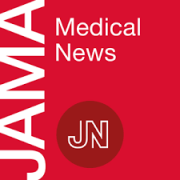Posted on February 07, 2019
Source: JAMA

"In the State of the Union Address on February 5, 2019, President Donald J. Trump announced his administration’s goal to end the HIV epidemic in the United States within 10 years. The president’s budget will ask Republicans and Democrats to make the needed commitment to support a concrete plan to achieve this goal. While landmark biomedical and scientific research advances have led to the development of many successful HIV treatment regimens, prevention strategies, and improved care for persons with HIV, the HIV pandemic remains a public health crisis in the United States and globally."
"In the United States, more than 700 000 people have died as a result of HIV/AIDS since the disease was first recognized in 1981, and the Centers for Disease Control and Prevention (CDC) estimates that 1.1 million people are currently living with HIV, about 15% of whom are unaware of their HIV infection.1 Approximately 23% of new infections are transmitted by individuals who are unaware of their infection and approximately 69% of new infections are transmitted by those who are diagnosed with HIV infection but who are not in care.2 In 2017, more than 38 000 people were diagnosed with HIV in the United States. The majority of these cases were among young black/African American and Hispanic/Latino men who have sex with men (MSM). In addition, there was high incidence of HIV among transgender individuals, high-risk heterosexuals, and persons who inject drugs.1 This public health issue is also connected to the broader opioid crisis: 2015 marked the first time in 2 decades that the number of HIV cases attributed to drug injection increased.3 Of particular note, more than half of the new HIV diagnoses were reported in southern states and Washington, DC. During 2016 and 2017, of the 3007 counties in the United States, half of new HIV diagnoses were concentrated in 48 “hotspot” counties, Washington, DC, and Puerto Rico.4"
"The US Department of Health and Human Services (HHS) has proposed a new initiative to address this ongoing public health crisis with the goals of first reducing numbers of incident infections in the United States by 75% within 5 years, and then by 90% within 10 years. This initiative will leverage critical scientific advances in HIV prevention, diagnosis, treatment, and care by coordinating the highly successful programs, resources, and infrastructure of the CDC, the National Institutes of Health (NIH), the Health Resources and Services Administration (HRSA), the Substance Abuse and Mental Health Services Administration (SAMHSA), and the Indian Health Service (IHS). The initial phase, coordinated by the HHS Office of the Assistant Secretary of Health, will focus on geographic and demographic hotspots in 19 states, Washington, DC, and Puerto Rico, where the majority of the new HIV cases are reported, as well as in 7 states with a disproportionate occurrence of HIV in rural areas."